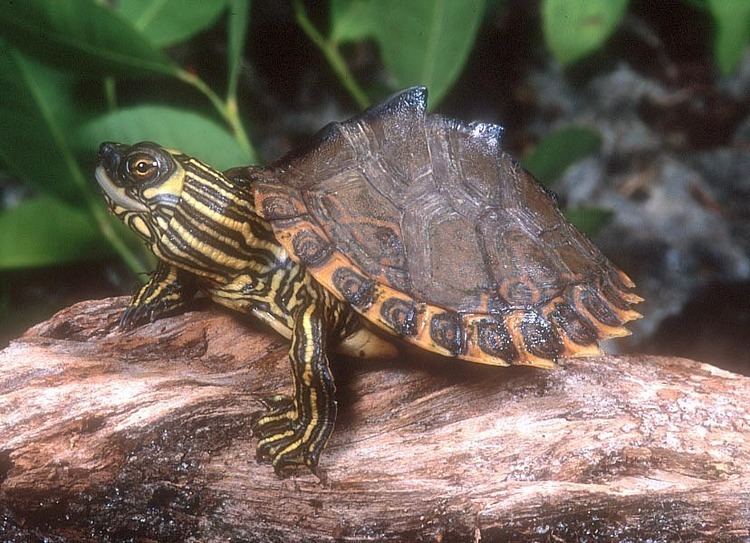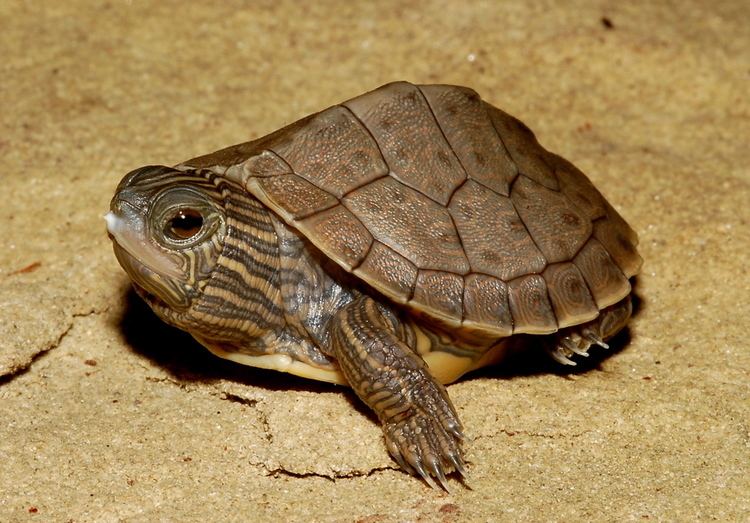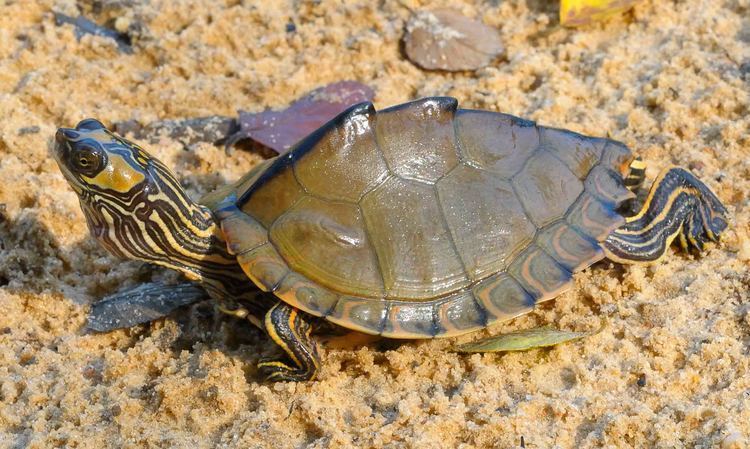Kingdom Animalia Suborder Cryptodira Family Emydidae Scientific name Graptemys Higher classification Deirochelyinae Order Turtle | Subphylum Vertebrata Superfamily Testudinoidea Subfamily Deirochelyinae Phylum Chordata Rank Genus | |
 | ||
Lower classifications Northern map turtle, False map turtle, Black‑knobbed map turtle, Ouachita map turtle, Cagle's map turtle | ||
Southern ouachita map turtle graptemys ouachitensis
Graptemys is a genus of aquatic, freshwater turtles, known commonly as map turtles or sometimes sawback turtles, which are endemic to North America.
Contents
- Southern ouachita map turtle graptemys ouachitensis
- Delta map turtle graptemys nigrinoda delticola aka southern black knobbed map turtle
- Geographic range
- Description
- Feeding Morphology
- Courtship behavior
- Longevity
- Pet trade
- Species
- References

Delta map turtle graptemys nigrinoda delticola aka southern black knobbed map turtle
Geographic range

Species in the genus Graptemys are found throughout the eastern half of the United States and northward into southern Canada.
Description

Graptemys species superficially resemble many other species of aquatic turtles, including sliders (Trachemys) and cooters (Pseudemys). However, they are distinguished by a keel that runs the length of the center of the carapace. In some southern species, the keel can result in vertebral spines, resulting in the map turtle's other common name — "sawback". They also typically grow to a smaller size at maturity. They are given the common name "map turtle" due to the map-like markings on the carapace. Map turtles are known for intricate head markings and strong sexual dimorphism with mature females twice the length and 10 times the mass of mature males.
Feeding Morphology
Females of all map turtle species can be partitioned into three groups based on head (alveolar) width and corresponding ecology and phylogeny.
- Microcephalic females are narrow headed, sympatric with a broader headed species, and consume few mollusks. Microcephalic species include yellow-blotched, black-knobbed, ringed, Ouachita, and Sabine map turtles.
- Mesocephalic females have moderately broad heads and tend to eat mostly mollusks along with softer bodied prey. Mesocephalic species include Cagle's, northern, false, Mississippi, and Texas map turtles.
- Megacephalic females have exceptionally broad heads, and feed almost exclusively on mollusks. Megacephalic females include Barbour's, Escambia, Pascagoula, Pearl River, and Alabama map turtles.
Males do not fit neatly into the three groups describing head width, with differences in head width likely not influencing diet.
Courtship behavior
Adult Graptemys males have greatly elongated claws on the front feet, which are used in courtship behavior. The male faces the considerably larger female and "fans" her face, vibrating his foreclaws against her head to induce her to cooperate in mating.
Longevity
Average life expectancy of map turtles ranges from 15 to 100 years, depending on species.
Pet trade
Throughout the pet trade, Mississippi, common, and Ouachita map turtles were bred and hatched out by the thousands in the 1970s. Various other turtles were available, but as the salmonellosis Four-inch Law was established, map turtles and others slowly decreased in popularity. Today, these same three still hold the title for most common among the pet trade. Other species being captive-bred more often include the Texas map turtle, Cagle's map turtle, and the black-knobbed map turtle. Some harder-to-find map turtles include the yellow-blotched map turtle and the Pearl River map turtle.
Species
The following species and subspecies are recognized as being valid (listed alphabetically by specific name and subspecific name).
Nota bene: A binomial authority or trinomial authority in parentheses indicates that the species or subspecies was originally described in a genus other than Graptemys.
